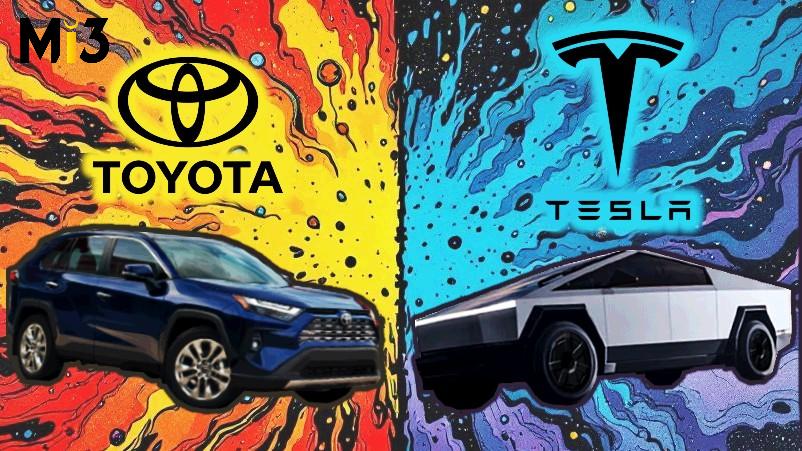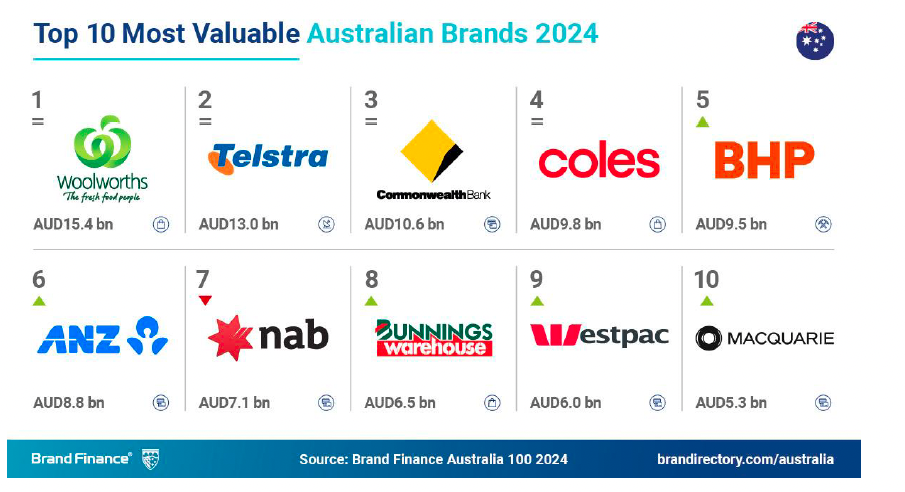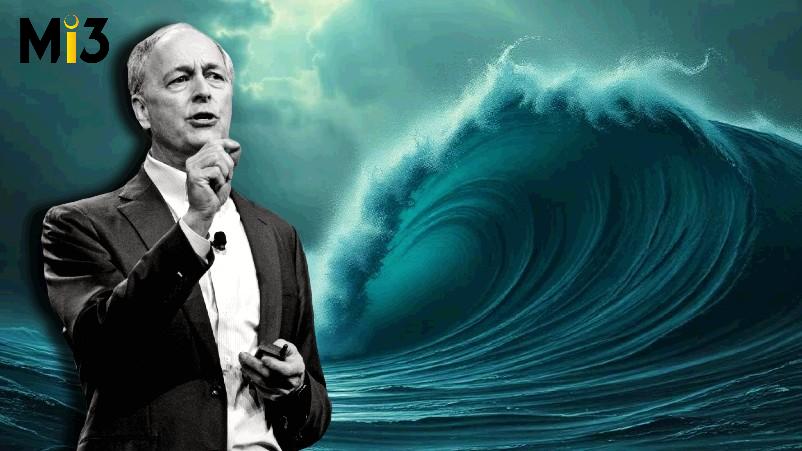When customers love you but prospects hate you: Forrester’s Total Experience scores for Tesla and Toyota expose the paradox of brand experience versus customer experience

What you need to know:
-
Tesla’s brand has split in two. Customers still love their cars, but non-customers are turning away in droves, creating a growing threat to future sales, according to Forrester’s new Brand Experience Score research.
-
Brand perception among non-customers has collapsed, plummeting from industry-leading levels in 2024 to just 33.3 in 2025, dragged down by Elon Musk’s political antics in the first half of 2025 and cultural controversies. Yet customer experience remains strong, outperforming rivals like Toyota and Honda.
-
Tesla’s faltering financials, which saw quarterly deliveries fall from nearly 500,000 in Q4 2024 to 337,000 in Q1 2025, with net profit diving from $2.3bn to $400m, are a powerful proof point for Forrester’s theory about the power of brand experiences. Australia is feeling it too.
-
By January this year, Tesla sales were down 41 per cent, and that trend line has continued.
-
The experience paradox is biting. Tesla has loyalty from current owners, but shame and ambivalence now stalk the brand, and outsiders increasingly won’t consider it.
-
Reputation damage is sticky since regaining trust is far harder than keeping it – and Tesla’s current perception gap is wide. Where it was last year neck and neck with Toyota, Tesla has cratered in less than 12 months.
-
Musk is arguably an anomaly,. But the wider lesson is that marketers need to understand the relative impact of both brand experience and customer experience, or risk being adored inside the tent but shunned outside it. That’s a fatal flaw in markets where future growth depends on broad trust, not just product devotion.
-
Especially as that product ages, and suffers from a lack of innovation and underpowered marketing.
Their reputation among non-customers plummeted, and that coincided with the political activity of their CEO, who was very active during the election, and again in late 2024 and early 2025. At that point, the CEO’s personal brand essentially became the company’s brand.
A year ago Tesla seemed invincible. Its financials sparkled, deliveries swelled quarter by quarter, and its brand was both loved and feared in equal measure by rivals. Loyal customers waxed lyrical about their cars, while Forrester’s surveys placed the firm firmly among the leaders in both brand and customer experience. For once, Silicon Valley swagger was matched by Detroit-style scale.
But reputations, it seems, can unravel faster than profits. In 2025, Tesla finds itself in the oddest of positions: cherished by its customers, but increasingly shunned by those who have never bought its products. A company once synonymous with the future of mobility is learning an unforgiving truth of experience economics: affection from insiders is not enough if outsiders recoil.
The experience paradox
Forrester’s new Total Experience Score, an amalgam of customer and brand measures, captures the contradiction neatly. Half of the score is derived from the quality of customer experience: how easy Tesla makes things, how effective its service is, and how positive the emotions it engenders. The other half stems from brand experience, built on salience, fit and trust, among both existing customers and prospects. Each half is weighted equally.
In 2024 Tesla scored highly on both counts. Owners rated their experiences above Toyota’s (74.1 versus 72.6), and brand perceptions were strong. Tesla stood in the leading quadrant of Forrester’s framework, alongside Toyota and Honda. By 2025, while Toyota’s scores for both brand and customer experience kept humming along the trend line, the palimpsest of Elon Musk’s political interventions and online antics rewrote the Tesla’s reputation among non-customers. Their perception collapsed to just 33.3. That’s an extraordinary fall in the space of a year. Existing owners remained satisfied, but prospects now looked elsewhere.
“Their reputation among non-customers plummeted, and that coincided with the political activity of their CEO, who was very active during the election, and again in late 2024 and early 2025. At that point, the CEO’s personal brand essentially became the company’s brand,” said Tom Mouhsian, Principal Analyst, Forrester. “It was the brand’s reputation among prospective customers, that vertical alignment, that took the hit. It plummeted.”
“Nothing happened to the car itself. Tesla still makes good cars. They still have great customer service. Nothing changed in the power of the car or any of the features of the car. So it’s a good product… Their existing customers like it, but the brand sucks, ” he said, referring to the attitude beyond the customer base.
That blunt assessment is borne out by Forrester’s data: With its owners’ tentacles entangled in politics, cryptocurrencies and culture wars, the brand was dragged into disrepute in markets it once dominated.
Customers loyal, prospects lost
The paradox is stark. Riccardo Pasto, Mouhsian’s colleague, fellow Principal Analyst, and a Tesla driver, captures it personally: “Customers,” he says, “love the product. They still love the car and everything about it.” But, as he and a plethora of posts on social media about Doge, Musk’s support for extreme right-wing parties in Germany, and a clumsy Nazi-like salute revealed, many of those same customers also felt something akin to shame for their choices.
Such ambivalence is telling. Existing customers remain faithful; outsiders, however, increasingly refuse to consider Tesla at all. Forrester’s modelling suggests that when both brand and customer experience are strong, revenue-generating behaviours, repeat purchases, recommendations, and additional services, can rise fivefold. When one leg falters, the multiplier shrinks.
Tesla’s accounts provide corroborating evidence. In the second quarter of 2024, it delivered 444,000 cars, generating $25.5bn of revenue and $1.5bn in net profit. By the year’s end, deliveries reached almost 496,000, revenue peaked at $25.7bn, and profit hit $2.3bn.
Then came the fall. In the first quarter of 2025 deliveries plunged to 337,000, revenue slumped to $19.3bn, and net income shrivelled to just $400m. The second quarter brought only a partial recovery: deliveries rose to 384,000, revenue climbed to $22.5bn, and profits to $1.2bn, well below the heights of the previous year. For a company once constrained by supply, the sight of unsold cars on forecourts is ominous. (In contrast, Toyota enjoyed solid and consistent growth over the same periods.)
Forrester links this directly, although not exclusively to reputation drag. Musk’s behaviour coincided with boycotts in Europe, social-media campaigns against the brand, and even reports of vandalism against Tesla cars. Mouhsian also said other factors, such as tariffs, and a concerted push by Chinese auto manufacturers into Europe played a part in Tesla’s financial results.
Tesla’s travails are plain in Australia as much as abroad. By June this year, Australian sales were down more than 40 per cent, according to auto site CarExpert. Tesla experienced a brief moment of sunshine in May with its growth month of the year, but its July numbers were awful, down 64.6 per cent.
When it comes to trust, if you lose, if you break that trust, it’s going to take a long time to recover.
The cost of broken trust
Recovering lost trust is arduous. “When it comes to trust, if you lose, if you break that trust, it’s going to take a long time to recover,” says Pasto. Neuroscience backs him up: negative impressions, especially those tinged with strong emotion, tend to endure. Time may dull the sting, but only slowly.
Tesla therefore faces an uphill struggle. Loyal customers may sustain the firm in the short term, but without replenishment from new buyers the growth narrative weakens. Es[pecially as car sales tcycles are in the main multiyear.
The contrast with Toyota could not be sharper. Toyota’s brand lacks Tesla’s flamboyance – and has hardly been an early mover on electric vehicles – yet it delivers steady trust, affordability and reliability. That steadiness has kept its brand perception intact even as Tesla’s reputation has become a weathervane of volatility.
What might rescue Tesla? In theory, replacing its chief executive could prise apart the man from the marque. Yet that would also jettison the charisma that propelled its ascent. As Riccardo Pasto observes, the firm’s early triumphs were as much Elon Musk as they were the machine. To excise him now might steady the brand but extinguish its shine. The company is left suspended between loyalty and liability.
Tesla’s woes serve as a parable in experience economics. The moral is not simply that customer experience counts, but that perceptions among non-customers matter just as much. Devotees may keep buying, yet if prospects refuse to join the funnel, the market contracts – which is precisely what is happening. Forrester’s framework suggests firms that score well on both fronts enjoy a fivefold lift in revenue behaviour. Those that stumble, as Tesla has, watch the upside evaporate.
Nor will time alone guarantee healing. Memory degrades, as Pasto notes, but not evenly.
“We know that what impacts most brand perceptions and customer experience perceptions is recency and the magnitude of the memory. If it’s a very emotional moment, it’s going to stick around the longest, it’ll last a long time. So, recency and emotional impact determine the immediate reaction,” he says.
Dramatic episodes stick. In the short-term Tesla may muddle through on the devotion of its owners. But the long-term trajectory depends on whether it can restore trust among outsiders, those who have yet to buy, but whose perceptions determine future growth. That will be a long and uncertain climb.
Forrester’s numbers come with a final caution. In 2024, Tesla enjoyed the best of both worlds: adoration from customers and decent regard from non-customers, yielding rich multiples of revenue behaviour. By 2025, it still commands the first but has squandered the second. The result is a firm cherished by those inside the tent and mistrusted by those outside. In markets where reputation counts as much as engineering, that is a perilous imbalance.
The paradox of Tesla today is that it is both admired and reviled, both successful and struggling. Its customers love it, so have investors, who have driven its market capital up from $700 billion to almost $1.1 trillion since August last year – and that trajectory remains strong despite the sales slump. But Tesla’s customer prospects hate it. For a brand once seen as the future of mobility, that is the most dangerous contradiction of all, particularly for a firm currently trading on a staggering PE ratio of 195.
And as Riccardo Pasto concludes, recovering from brand damage is never easy: “It’s gonna take a long time to recover from that.”
Local antihero: Tesla v BYD v Toyota
Locally Tesla has been blown away by rival BYD and globally the two have traded places in the last year as the world’s biggest electric carmakers. The difference is that BYD makes plug-in hybrids (cars with petrol engines and a battery-powered drivetrain) versus Tesla’s ‘pure’ battery model, and that BYD started life as a battery company that then decided to make cars. With state-based advantages, vertical integration and massive economies of scale, BYD can therefore make cheaper cars of arguably comparable quality, or better. Plus, its bosses tend to be somewhat less controversial than Tesla’s, which may be a bigger factor in sales declines than consultant-estimated customer/brand experience quadrants.
BYD in Australia has stated intent to displace Toyota as the country’s biggest auto brand by 2030. That might be a stretch, but it could conceivably displace the number two and three brands, Mazda and Ford, well before then. It has already eclipsed Tesla.
Locally for the six months to June 2025, Toyota remains by far the automotive market leader, with just under 121,000 sales. While back circa 300 units on last year, that’s a rounding error, and Toyota is in no danger of being displaced anytime soon – despite BYD’s bull run.
As Tesla suffers, BYD is making massive local gains, with Australian sales up 145 per cent for the first half and accelerating hard (up 368 per cent in June alone). If BYD maintains even half that annual growth rate, and its rivals flatline or eke out single digit gains, the carmaker will likely overtake Ford and Mazda to become the number two Australian car brand by mid-2027, perhaps earlier.
(To 30 June 2025 Ford had 47,300 sales, -4.7 per cent YoY; Mazda has 48,942, +0.8 per cent. BYD had 23,355, +144.6 per cent. Tesla was back 39 per cent to 14,146 sales.)
From a CX perspective, some local rival marketers suggest BYD lacks the service infrastructure to maintain its all-out-growth strategy in the medium term. But the firm is massively ramping investment in retailers – planning to more than double dealerships from 40 to 100 by the year end, which will go some way to solving that perceived challenge..
Tesla’s problem is also product. Its cars, while regularly updated via software over the air, are now relatively old designs. While existing Tesla customers may buy another, BYD is bringing cheaper, more modern and arguably better-looking product to market, and also pushing hard into plug-in hybrids, by far the fastest growing segment locally (up 210 per cent for the half year to 30 June).
Plus government legislation around emissions across carmakers’ total portfolios (NVES) are forcing more traditional carmakers to ramp up EV and plug-in hybrid model rollouts locally or face steep penalties.
Which means even if Tesla can fix its leadership, brand and potential CX problems – product, price and massively increasing competition may prove larger obstacles in short order.
Perhaps it will even start investing in advertising.
Additional local analysis by Brendan Coyne





